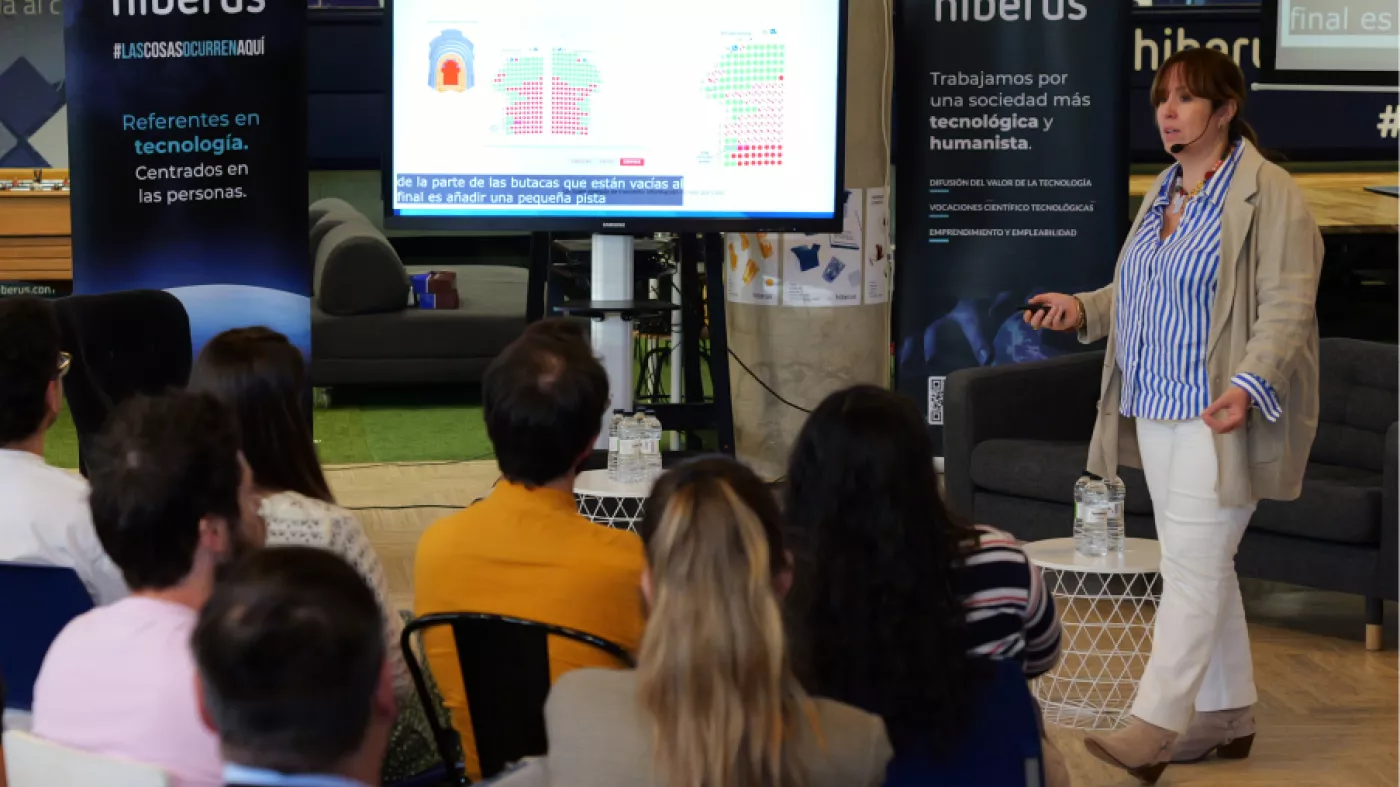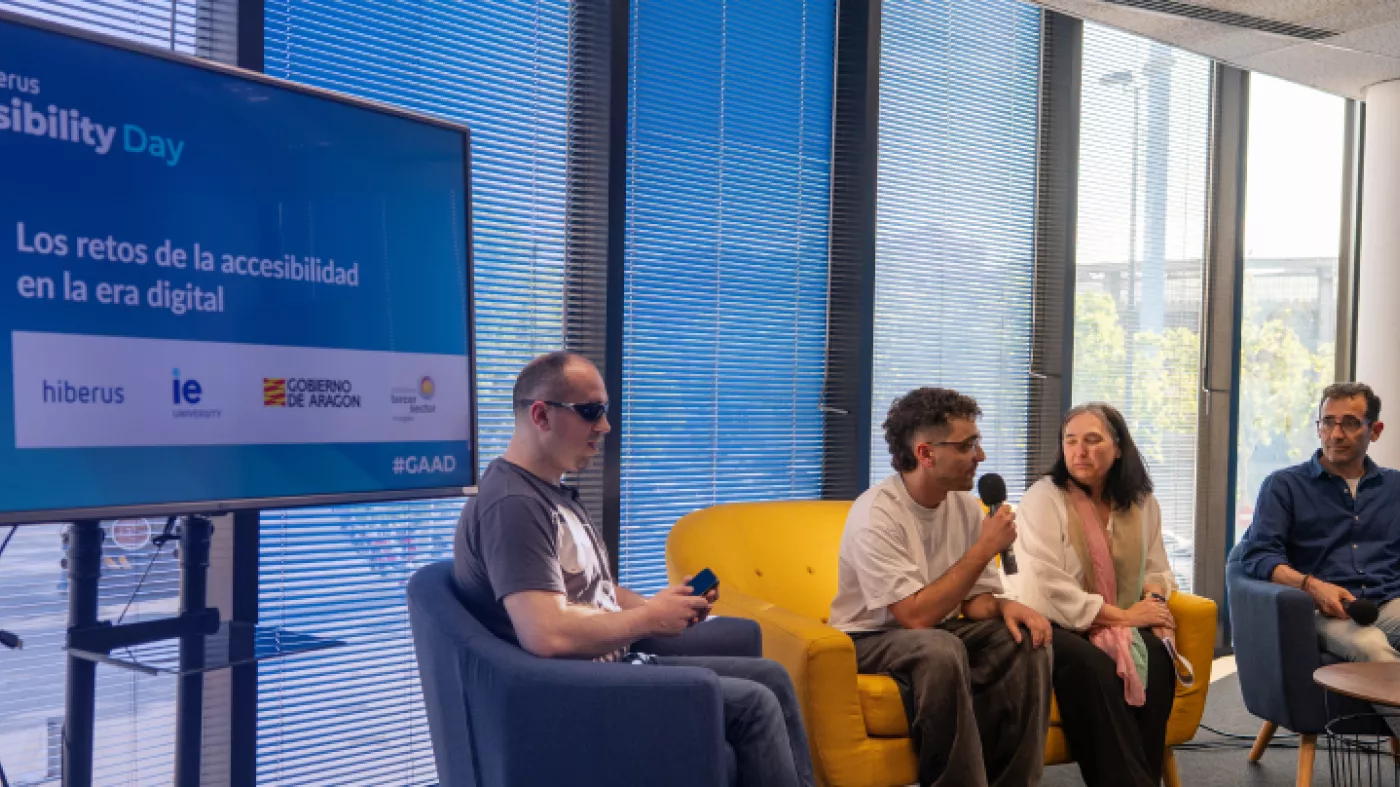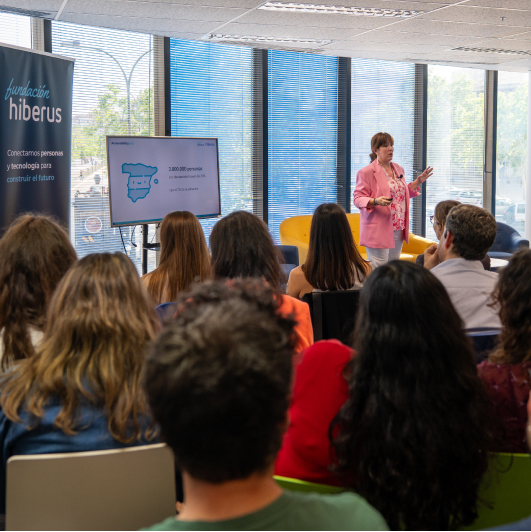A team of more than 10 people in charge of ensuring the accessibility of Openbank's digital tools.
#WE ARE
DIFFERENT
#WE ARE
DIFFERENT
Services for an accessible web
We make your website accessible to guarantee the right of all people to access information regardless of their qualities.
Comprehensive manual audits
We perform accessibility audits of your website or app following the most updated guidelines of the WCAG and the UNE EN 301549 standard.
OAW Reports
We generate the Observatory's periodic reports (OAW), including the Accessibility Review Report (ARR).
Personalized advice
We provide advice for the resolution of detected non-conformities.
Accessibility Statement
We write and update the Accessibility Statements following the indications of the European model.
Customized training
We provide training adapted to all needs, from informative talks to technical training.
Continuous improvement
We are constantly updated in terms of supporting technologies, standards or new legislation.
Increased traffic
Accessibility makes it possible to reach that 15% of people with disabilities who would otherwise not be reached.
Simplification of development
Some recommended conditions and technical requirements are associated with improvements in development processes, such as the separation of content and presentation.
Improved SEO positioning
The need to provide textual equivalents means that the structure and semantic tagging of the content enriches the information on the web, which favors indexing.
Increased usability
Working hand in hand with the usability part allows us to reach optimal solutions for users. If it is not accessible, it is not usable.
Enhanced profitability
By reaching a larger number of users and increasing traffic, greater business opportunities are generated and, consequently, higher turnover.
Improved brand image
By taking all people into account, social responsibility is increasingly demanded by society, thus improving the perception of the company.
AA
It certifies the adequacy of the portal or application to the standards defined by level AA of the WCAG 2.2, as well as the UNE-EN 301549:2019 and other national transpositions of the member states of the European Union.
Currently, it is required for public administration in Europe, and it is expected to be mandatory also for private companies that meet certain requirements in the coming years.
AAA
It certifies the compliance of the portal or application with the AAA level of the WCAG 2.2 or equivalent. In addition to complying with European standards, other criteria that seek to bring accessibility to the highest level are checked.
It is of special interest for entities representing groups related to disability or that promote values of commitment to universal accessibility.
Office documentation
Applies only to documentation (PDF files, office documents and similar).
Certifies that the document can be read by most users, with or without disabilities, and that it is compatible with most technical aids, such as screen readers, braille lines, magnification software and other specific user agents.
Inspiring client success stories
Driving the success of leading international companies
#
THINGS
HAPPEN
HERE
Our track record of ensuring affordable digital products
Meet our leaders

“We are experts in legislation and are in constant training to ensure compliance with regulations in all the projects we work with."
Rosa Mozota
Head of Accessibility

"Accessibility is essential for some, beneficial for all. At hiberus we guarantee the usability of your digital project, boosting your business goals."
Alan Escolà
Accessibility Consultant
Why hiberus
Customization
We evaluate your needs and adapt ourselves completely to the needs of the project, always ensuring accessibility, access to information for all users.
Support
We accompany and advise you from the initial phases of the projects to obtain optimal results, always following the W3C methodology.
Continuous learning
We have a team specialized in accessibility and digital strategy that is constantly updating and learning in order to offer you a quality service.
Ongoing communication
Coordination between external and internal teams is fundamental, that is why we establish a communication methodology with our clients to work as a single team.
The latest news from hiberus
FAQ
Web accessibility is the inclusive practice responsible for ensuring that all users, regardless of their personal characteristics or those derived from the environment, have access to any web page or service, without losing any of its content. In this way, equal opportunities are promoted.
To a greater or lesser extent, the lack of accessibility on a website affects us all. However, there are some users who are affected to a greater extent:
- Users with permanent disabilities, such as hearing, visual, motor, speech, cognitive and neurological disabilities.
- Users with occasional disabilities, such as people who cannot use one of their arms for a specific reason.
- People who are not fluent in the language.
- Users affected by external environmental agents, such as noise or light falling on the screen, which may prevent them from seeing part of the screen properly.
- People who connect from small equipment, such as telephones or electronic agendas.
- Elderly people with age-related difficulties. This is why accessibility ensures access to information for all users.
In Public Administrations, it is required by RD 1112/2018 that, at least, they have an AA level of accessibility.
Likewise, in private companies, those considered of special economic transcendence, providing services to the general public or retail trade with a turnover of at least 6 million euros or with more than 100 workers, it is also required by law 56/2007 to have an AA level of accessibility, marked by the UNE 301549:2022.
In the event of non-compliance with the regulations, financial penalties may be applied. So far there have been few cases in which they have been applied, but more and more users are using the proposed processes to make these types of claims.
While it is true that when designing it is necessary to take into account the criteria set by the UNE 301549:2022 to avoid making mistakes, it is possible to use colors, images and interactive elements, provided that they are well labeled at the development level and allow all users, including those who access with assistive technologies and those who have some kind of disability, do not lose any content from the device they interact with, whether from a desktop computer, tablet or cell phone.
The WCAG 2.1 standard, published by the World Wide Web Consortium (W3C), the leading international Internet standards organization, establishes a set of guidelines for web accessibility. This standard is made up of four fundamental principles: perceptibility, operability, comprehensibility and robustness.
Based on these premises, three levels are established to determine the level of accessibility of a website. Level AA involves the elimination of significant accessibility barriers with respect to the most basic level, level A. This first level includes functionalities such as text alternatives for non-written content, subtitles for audio, adaptation of content to different formats or availability of functions from the keyboard.
Level AA includes improvements such as subtitles for live audio, the possibility of changing the text size up to 200% or the option of displaying content in horizontal and vertical orientation. Public Administrations are obliged to reach this level as a minimum, according to current legislation.
Finally, we find the AAA level, the ideal framework to achieve a reference website in terms of accessibility. It incorporates functionalities such as sign language, extended audio description, warnings about waiting times, restricted use of text images or user localization.
Web accessibility and usability share a common goal: to ensure that the user can make optimal use of web pages. However, there are differences between the two. While usability seeks to improve the user experience when browsing the web, accessibility seeks to ensure universal access to the web for users.
Although they are not the same, there is a clear correlation between the two concepts. A web design accessible to all users must be usable, since, if there are difficulties in navigation due to inadequate usability, people with disabilities or who require assistance to use the web may be more affected.
In the same way, web usability also benefits from good accessibility. An accessible website is designed to be easily accessible to all people, which forces usability experts to make an extra effort when designing the interface to facilitate navigation.
Therefore, it is important to work on both concepts when designing a website. In this way, we will offer a better user experience, which will result in an increase in visits and conversion rate.











